Introduction to Utah Lost Treasures
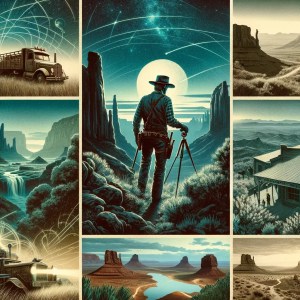
Growing up amidst the rugged beauty of Utah, I’ve always been drawn to the great outdoors. The red canyons, vast deserts, and towering mountains of my home state aren’t just a playground for camping, fishing, and hiking enthusiasts like myself; they’re also a treasure trove of legends and myths. As a child, I was captivated by stories of sunken ships and hidden caches of gold. I’d spend hours daydreaming about unearthing ancient treasures, imaging myself as a famous treasure hunter. Little did I know, my beloved Utah is a hotbed for such thrilling tales. Let’s embark on a journey through some of the most enthralling lost treasures of Utah, a topic I’ve always wanted to explore.
The Lost Rhoades Mine
Nestled in the high Uintas, the Lost Rhoades Mine has been a subject of fascination for Utahns like me for generations. The mine’s origin traces back to the early Mormon settlers, and the legend has it that it’s filled with gold enough to dwarf any modern fortune. Despite many valiant attempts, the exact location of the Rhoades Mine remains a mystery, leaving treasure hunters and historians alike pondering its existence. As someone who’s tramped through the Uintas numerous times, the thought that a vast treasure could be lying undiscovered under my feet is exhilarating.
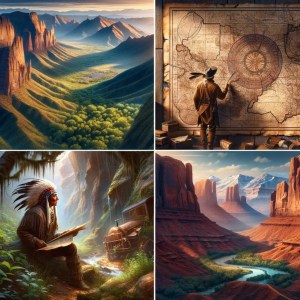
Background on the Mine’s History and Legends
The Lost Rhoades Mine is a legend deeply rooted in Utah’s history, particularly intertwined with the early Mormon settlers. The story goes that Thomas Rhoades, a member of The Church of Jesus Christ of Latter-day Saints, was entrusted by Brigham Young to mine gold for the church. This gold was allegedly used to finance the struggling church and aid in the settlement of Utah. The mine’s location, supposedly in the Uinta Mountains, was kept a secret to protect this valuable resource. Over the years, this secrecy fostered a legend shrouded in mystery, with each retelling adding more intrigue.
As someone who has grown up hearing these tales, the allure of the Lost Rhoades Mine isn’t just about the gold; it’s about the rich tapestry of stories that are a part of Utah’s history. The legend speaks to the determination and resilience of the early settlers in Utah, surviving and thriving in a harsh and unforgiving landscape.
Stories and Attempts to Find the Mine
Numerous attempts have been made to locate the Lost Rhoades Mine, each fueled by a blend of hope, greed, and fascination. Treasure hunters, both amateur and professional, have scoured the Uintas, armed with maps and tales passed down through generations. Some claimed to have come close, while others returned empty-handed, their dreams of riches unfulfilled.
One of the most notable attempts was by Gale Rhoades, a descendant of Thomas Rhoades. Gale claimed to have inherited maps and documents that pinpointed the mine’s location. His quest, however, was met with skepticism and legal challenges, further adding to the mine’s enigmatic reputation. These pursuits often remind me of the many hiking trips I’ve taken in the Uintas, where every cave and crevice seemed to whisper possibilities of hidden gold.
Impact on Local Culture and Literature
The legend of the Lost Rhoades Mine has significantly impacted Utah’s culture and literature. It’s a symbol of the state’s pioneering spirit and the allure of the unknown. The mine has been the subject of numerous books, articles, and documentaries, each attempting to unravel its mystery.
Authors like Gale Rhoades and Kerry Ross Boren have penned works that explore the mine’s history and supposed location, contributing to a literary genre that mixes historical research with folklore. This blend of fact and fiction has not only entertained but also inspired Utahns to explore their history and landscape.
In a broader cultural context, the Lost Rhoades Mine represents the universal human desire to uncover the unknown. It’s a reminder of the adventures that lie in our own backyards and the stories that shape our understanding of place and identity. As a lifelong Utah resident, the legend of the Lost Rhoades Mine isn’t just a tale of lost gold; it’s a part of my heritage, a thread in the rich tapestry of Utah’s history that continues to inspire exploration and wonder.
Montezuma’s Treasure
Utah’s southern canyons hold another intriguing tale – that of Montezuma’s Treasure. Legend has it that the Aztecs hid a massive treasure to escape the clutches of Spanish conquistadors. The story took a turn in the 20th century when Freddie Crystal arrived in Utah with a map he claimed led to the treasure. Though his efforts were in vain, the legend persisted, further fueled by eerie tales of curses and ghostly guardians. The thought of such a treasure hidden in the depths of Utah’s canyons adds an element of mystery to my every hike in the region.
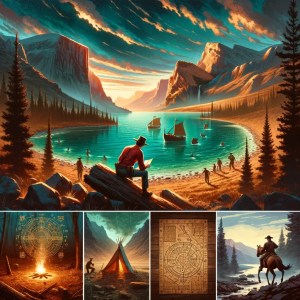
The Tale of Montezuma’s Lost Gold
Montezuma’s Treasure, a story of Aztec riches hidden in the Utah wilderness, has been a part of local folklore for centuries. According to legend, when the Spanish conquistadors led by Hernán Cortés invaded the Aztec Empire, Emperor Montezuma amassed a vast treasure to appease them. However, as the Spaniards’ greed grew, the Aztecs decided to hide their treasure. The story goes that they fled north, possibly reaching what is now southern Utah, and secreted their wealth in the labyrinthine canyons.
As a Utah native, I’ve often imagined these canyons not just as geological marvels but as silent guardians of this ancient Aztec treasure. This legend intertwines Utah’s natural wonders with a narrative that spans continents and centuries, adding a layer of mystique to the already captivating landscape.
Historical Searches and Modern Theories
The hunt for Montezuma’s Treasure took a significant turn in the early 20th century with Freddie Crystal. This treasure hunter arrived in Utah with a map he claimed showed the treasure’s location. His focus was the Johnson Canyon area in Southern Utah, where he believed the treasure lay hidden in a network of caves. While his searches yielded no treasure, they sparked widespread interest and numerous subsequent expeditions.
In more recent times, locals like Brandt Child have posited new theories. Child believed that the real location of the treasure was in an underwater cave system on his property at Three Lakes Ranch. His efforts, however, were hampered by both alleged supernatural occurrences and environmental protections for the endangered amber snail found in the area. These modern endeavors, steeped in both fact and folklore, resonate with me as they embody the enduring spirit of adventure and the allure of the unknown that defines Utah’s heritage.
Impact on Local Folklore and Tourism
The legend of Montezuma’s Treasure has become an integral part of Utah’s folklore. It’s not just a story of hidden riches; it’s a narrative that captures the imagination and showcases the state’s rich cultural tapestry. This legend has attracted tourists and treasure hunters from around the world, eager to explore Utah’s canyons and perhaps uncover a piece of history.
The tale has also influenced local culture, inspiring works of art, literature, and even influencing tourism. It serves as a reminder of the diverse histories that converge in Utah, from Native American heritage to Spanish explorers and beyond. As a lifelong resident and outdoor enthusiast, I find that these legends add depth and intrigue to my explorations, making each hike through the canyons an adventure into the unknown.
In essence, Montezuma’s Treasure is more than a tale of lost gold; it’s a story that weaves together history, adventure, and the natural beauty of Utah. It’s a legend that continues to inspire curiosity and exploration, reminding us of the mysteries that may still lie hidden beneath the red rocks and canyons of this incredible state.
Butch Cassidy’s Outlaw Stash
Utah’s wild west history is incomplete without mentioning Butch Cassidy and his infamous Castle Gate heist. It’s said that Cassidy, along with his gang, hid their loot somewhere in the vast Utah wilderness. Despite numerous expeditions, the treasure remains undiscovered. For a Utah native and an outdoor enthusiast, the story of Cassidy’s hidden stash isn’t just a tale from the past; it’s an ongoing invitation to explore the less-trodden paths of my state.
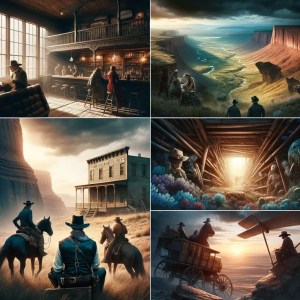
The Castle Gate Heist and the Legend
Butch Cassidy, a name synonymous with the Wild West and daring heists, has a special connection to Utah’s lore. The most famous tale involving Cassidy in Utah is the Castle Gate heist of 1897. Cassidy, along with his infamous gang, the Wild Bunch, robbed a Pleasant Valley Coal Company payroll from a train near Castle Gate, making off with a substantial sum. The legend suggests that the stolen loot was never fully spent or recovered, and that Cassidy hid it somewhere in the vast wilderness of Utah.
As a Utah local who grew up with stories of the Wild West, Cassidy’s legend has always been a tantalizing tale of adventure and mischief. It’s a story that makes one look at the Utah landscape not just for its natural beauty but also as a possible hidden cache of outlaw treasure. The red rock canyons and rugged terrain become not just a backdrop for outdoor activities but a treasure map waiting to be deciphered.
Continued Fascination and Treasure Hunts
The legend of Butch Cassidy’s buried treasure continues to captivate treasure hunters and history buffs. Over the years, numerous expeditions have been launched to uncover Cassidy’s stash, particularly around Robbers Roost – a known hideout of the Wild Bunch. These modern-day treasure hunts, equipped with metal detectors and historical maps, have added an exciting layer to exploring Utah’s outdoors.
For someone like me, who has spent countless hours hiking and exploring these areas, the possibility of stumbling upon a piece of history left by Butch Cassidy adds an element of excitement and wonder to every expedition. While these treasures remain elusive, the hunt itself is a thrilling pursuit, merging the love for the outdoors with the intrigue of historical legends.
Impact on Utah’s Cultural Heritage
Butch Cassidy’s legend is more than just a tale of an outlaw; it’s a significant part of Utah’s cultural heritage. It represents a time of rebels, outlaws, and the untamed wilderness of the American West. This legend has inspired books, movies, and folklore, contributing to the state’s rich storytelling tradition.
Moreover, the story of Cassidy’s treasure contributes to the mystique and allure of Utah’s natural landscapes. It invites locals and visitors alike to explore the state not just for its scenic beauty but also as a living museum of American history. As a lifelong resident, these tales enrich my experiences in Utah’s outdoors, adding layers of history and legend to the stunning scenery. Cassidy’s tale is a reminder of the colorful characters who have traversed these lands and left behind stories that continue to captivate and inspire.
The Lost Josephine Mine
Another jewel in Utah’s crown of legends is the Lost Josephine Mine. Spanish Jesuit priests reportedly established this mine in the Uinta Mountains in the 17th century, only to abandon it later with its riches untouched. The mine is said to contain gold and silver, and the enigma surrounding its location continues to fascinate treasure hunters. Every time I trek through the Uintas, I can’t help but wonder if the Lost Josephine Mine lies hidden beneath the rugged terrain.
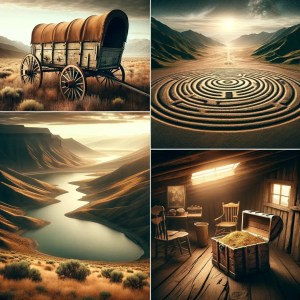
Origins and Mystique of the Mine
The Lost Josephine Mine, steeped in mystery and legend, is one of Utah’s most captivating tales of lost treasure. The story dates back to the 17th century, when Spanish Jesuit priests reportedly discovered rich veins of gold and silver in the Uinta Mountains. As legend has it, they established the Josephine Mine, extracting precious metals for decades. However, under threat from native tribes and fearing discovery, the priests supposedly concealed the mine around 1680, leaving behind their untold riches.
For someone like me, who has been traversing Utah’s landscapes all my life, the Lost Josephine Mine symbolizes the enigmatic allure of our state’s history. The Uinta Mountains, a familiar terrain for hiking and exploration, hold a different meaning through the lens of this legend – they are a secret keeper of a long-lost treasure, veiled in the folds of history.
Modern-Day Searches and Speculations
The allure of the Lost Josephine Mine has not faded over time, with numerous treasure hunters and enthusiasts trying to pinpoint its location. The mine, reportedly rich in gold and silver, has been the focus of various expeditions, fueled by fragmented historical accounts and local lore. In 2013, a notable claim was made by Gary Holt, who professed to have discovered the mine near Hoyt’s Peak. Though his findings, referred to as ‘goldcite,’ were met with skepticism, they reignited interest in the legend.
As a Utah local with a deep connection to the outdoors, these expeditions resonate with me. They’re not just searches for material treasure; they’re quests to uncover a piece of our past, to connect with the history that is etched into the very mountains and valleys of Utah.
The Mine’s Impact on Local Lore and Culture
The Lost Josephine Mine is more than a tale of hidden riches; it’s a cultural emblem that captures the essence of Utah’s historical tapestry. The legend has inspired countless stories, books, and even guided some of my own adventures in the Uintas. It speaks to the human spirit’s relentless pursuit of the unknown and the allure of what lies hidden.
The story of the mine also highlights the intersection of different cultures in Utah’s history – from the Spanish Jesuits to the native tribes and the early Mormon settlers. This cross-cultural narrative enriches our understanding of Utah’s past, adding depth and complexity to the state’s identity.
As a lifelong explorer of Utah’s vast and varied landscapes, the Lost Josephine Mine represents an enduring mystery, one that intertwines the beauty of nature with the intrigue of history. It’s a reminder that our adventures in the outdoors are not just physical journeys but also explorations into the rich stories and legends that form the bedrock of Utah’s cultural heritage.
Treasure Hunting in Utah Today
In today’s age, the quest for these lost treasures has become a blend of historical research, advanced technology, and old-fashioned exploration. While the romantic notion of stumbling upon a hidden treasure is enticing, the reality involves careful planning and understanding of legal and ethical considerations. But for someone like me, who has grown up in Utah’s wilderness, the thrill of the hunt is as much about connecting with the state’s rich history and stunning landscapes as it is about the prospect of finding treasure.
The Evolution of Treasure Hunting
In today’s world, treasure hunting in Utah has transformed from the lore-filled quests of yesteryears into a blend of historical sleuthing and technological exploration. With advances in technology, such as GPS, metal detectors, and sophisticated mapping tools, the search for Utah’s lost treasures has become more precise and accessible. However, the essence of treasure hunting remains the same – a thrilling pursuit fueled by the allure of discovery and the mystery of the unknown.
As a lifelong Utah resident who has spent countless days and nights in the vast wilderness, I’ve witnessed this evolution firsthand. The modern treasure hunter is equipped not just with a shovel and a dream, but also with a deep understanding of history and the landscape. These expeditions are more than just a search for material wealth; they are an exploration of Utah’s rich past.
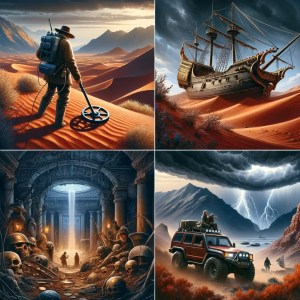
Legal and Ethical Considerations in Treasure Hunting
It’s crucial to acknowledge the legal and ethical aspects of treasure hunting. Utah, rich in archaeological sites and historical artifacts, has specific laws and regulations that govern the search for and handling of potential treasures. This includes respecting private property rights, adhering to state and federal laws, especially those concerning Native American artifacts, and the preservation of historical sites.
For me, respecting these laws and the ethical considerations of treasure hunting is paramount. It’s about preserving our state’s history and natural beauty for future generations, while also pursuing the thrill of the hunt. The real treasure lies in understanding and respecting the land and its history, not just in material findings.
The Role of Technology in Modern Treasure Hunts
Technology has undeniably changed the face of treasure hunting in Utah. Metal detectors, for instance, have become an indispensable tool for many treasure hunters. These devices can unearth objects buried deep underground, offering a glimpse into the past. Additionally, satellite imagery and topographical maps have made it easier to navigate Utah’s diverse terrain and pinpoint potential sites of interest.
Yet, despite these technological advancements, the heart of treasure hunting remains rooted in the love for the outdoors and the thrill of adventure. As someone deeply connected to Utah’s wilderness, I find that technology enhances the experience, allowing us to uncover secrets of the land that were previously inaccessible.
Today’s treasure hunting in Utah is a fascinating blend of the past and the present, where historical legends meet modern technology. It’s a pursuit that continues to captivate those who, like me, have grown up amidst the tales and landscapes of this extraordinary state. Whether armed with a map, a metal detector, or just a sense of adventure, the hunt for Utah’s lost treasures is an enduring testament to the human spirit’s quest for discovery.
Why These Legends Persist
Utah’s lost treasures are more than just stories; they’re a testament to the state’s colorful history and enduring allure. They blend the factual with the mythical, creating a tapestry of intrigue that has captivated locals and visitors for centuries. For a lifelong Utahn and outdoor enthusiast, these legends are not just tales to tell around the campfire; they’re an integral part of my state’s identity and a constant reminder of the mysteries that may still lie hidden in our vast landscapes.
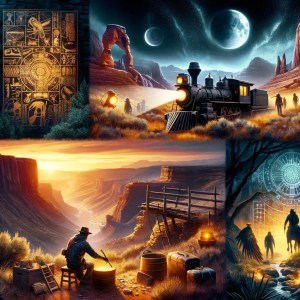
The Allure of the Unknown
The legends of Utah’s lost treasures, from the Lost Rhoades Mine to Butch Cassidy’s Outlaw Stash, have endured for generations, captivating the hearts and minds of locals and adventurers alike. At the core of their persistence is the universal allure of the unknown. These stories tap into our deep-seated curiosity and wonder about what lies hidden beneath the surface, both literally and metaphorically.
As a lifelong Utahn, I’ve always felt a profound connection to these legends. They’re not just stories to me; they’re an integral part of the state’s identity, woven into the very fabric of Utah’s history and landscape. The possibility that undiscovered riches lie hidden in the mountains and canyons I’ve explored so many times adds a layer of intrigue and possibility to every adventure.
Cultural and Historical Significance
These treasure tales are more than mere myths; they are vital threads in the tapestry of Utah’s cultural and historical narrative. They reflect the diverse influences that have shaped our state – from Native American heritage to Spanish explorers, early Mormon settlers, and Wild West outlaws. These stories preserve the memory of those who walked these lands before us, their hopes, struggles, and dreams.
The legends also serve as a bridge connecting past and present, inviting each new generation to explore and appreciate Utah’s rich history. They remind us that history is not just found in textbooks but is alive in the stories we tell and the lands we explore.
The Role of Storytelling and Community
Storytelling is a powerful tool for preserving history and fostering community, and these treasure legends are prime examples. They are shared around campfires, passed down through families, and discussed among friends, creating a sense of shared heritage and community. These stories bring people together, sparking conversations, debates, and even joint expeditions to uncover the truth.
As someone who has grown up in this community, I’ve experienced firsthand the way these legends can bond people. They foster a sense of belonging and shared purpose, uniting us in our common love for Utah and its mysteries.
The enduring appeal of Utah’s lost treasure legends lies in their ability to inspire, unite, and intrigue. They are a testament to the timeless allure of the unknown and the enduring power of storytelling. As a native Utahn and outdoor enthusiast, these legends are not just tales of a bygone era; they are a living, breathing part of Utah’s identity, inviting us all to explore, discover, and wonder.
Conclusion
Exploring the legends of Utah’s lost treasures has been a journey close to my heart. As someone who has spent a lifetime traversing the state’s diverse terrains, these stories are a bridge between my love for adventure and the rich tapestry of Utah’s history. They serve as a reminder that sometimes, the greatest treasures lie not in the gold or jewels we might find, but in the stories, we keep alive and the lands we explore. Here’s to many more years of seeking adventure in Utah’s great outdoors, where every canyon and mountain seems to whisper secrets of a bygone era.
Join the Adventure at Simply Sound Society
For those enchanted by the mysteries of Utah’s lost treasures and drawn to the thrill of exploration, I invite you to join our community at Simply Sound Society. Our forum, accessible at Simply Sound Society, is more than just a platform; it’s a gathering place for enthusiasts, historians, adventurers, and dreamers alike.

At Simply Sound Society, you’ll find a vibrant community of individuals who share your passion for uncovering the hidden treasures of Utah. Whether you’re a seasoned treasure hunter, a history buff, or someone who simply loves the great outdoors, you’ll find like-minded souls eager to exchange stories, share insights, and perhaps even team up for expeditions into Utah’s majestic wilderness.
Our forum is a treasure trove of information, where members share the latest research, historical findings, and personal experiences related to Utah’s lost treasures. You can dive into discussions about the Lost Rhoades Mine, debate the whereabouts of Butch Cassidy’s Outlaw Stash, or share your theories on the elusive Lost Josephine Mine.
But Simply Sound Society is more than just a place for treasure talk. It’s a community where you can connect with fellow outdoor enthusiasts, plan your next hiking or camping adventure, and discover the best spots to explore Utah’s breathtaking landscapes. Our members come from diverse backgrounds, each bringing unique perspectives and experiences to enrich our understanding of Utah’s rich history and natural beauty.
Joining Simply Sound Society is easy and free. Simply visit https://forum.simplysoundadvice.com/ and sign up. Once you’re a member, you can start posting, engaging with others, and becoming an active part of a community that celebrates the spirit of adventure and the mysteries of our beautiful state.
So, if you’re ready to delve deeper into the legends of Utah’s lost treasures and connect with others who share your passion, Simply Sound Society is the perfect place for you. Join us today, and let’s embark on this journey of discovery together!














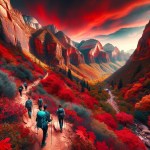

Hello my loved one I want to say that this post is amazing great written and include almost all significant infos I would like to look extra posts like this
Fantastic beat I would like to apprentice while you amend your web site how could i subscribe for a blog site The account helped me a acceptable deal I had been a little bit acquainted of this your broadcast offered bright clear concept
Thank you for sharing your thoughts, it means the world to me!
What I do not understand is how you are not even more well-liked than you currently are. You are exceptionally intelligent and know so much about this subject that it caused me to believe it from a multitude of perspectives. It seems that people are not interested in anything related to Lady Gaga. Your own work is consistently excellent.
I appreciate your website, however I think you might check the spelling of a few of your postings. Even though I find it quite difficult to tell the truth because so many of them have spelling errors, I will most certainly return.
This webpage is fabulous. The superb information shows the maker’s earnestness. I’m dazed and envision additional such incredible presents on.
Thank you so much for the nice words! I am glad you enjoyed this article.
Your point of view caught my eye and was very interesting. Thanks. I have a question for you.
Thank you for the compliment. Yes, I am happy to answer any questions you may have!